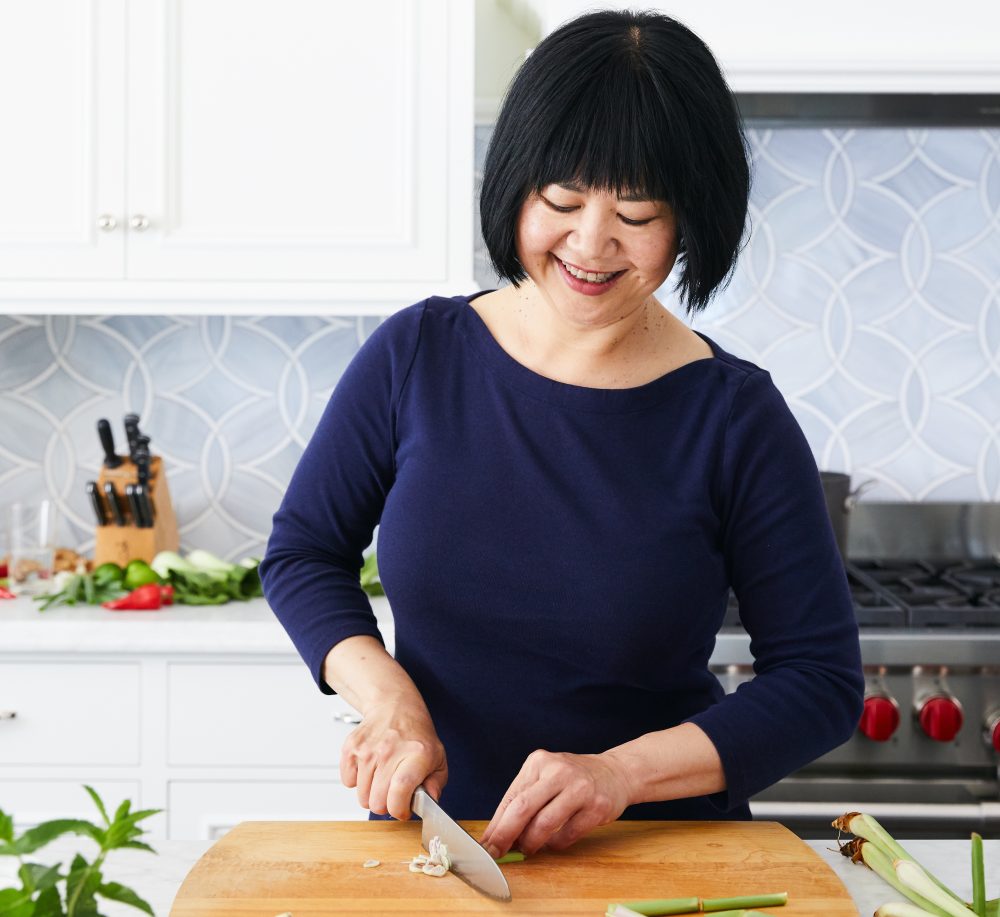Cookbook author Andrea Nguyen has a way with words that rivals her expertise in the kitchen. For proof, look no further than her new book, “Vietnamese Food Any Day: Simple Recipes for True, Fresh Flavors.” Her favorite food words? Try her favorite four-letter food words. Nguyen can narrow it down and still wax poetic. Below, find four terms that serve as a bridge for anyone learning more about Vietnamese cooking, along with the Milk Street products that can help.
Rice
“The first thing I learned how to make was rice. That’s the first thing my mother taught me when she realized I was chubby and interested in food,” Nguyen says. She’s partial to jasmine, which she buys directly from Thailand and makes in a heavy, 1½ quart saucepan—2 to 3 quarts if she's cooking in a bigger batch, which she often does. “People think you have to make rice when you want to eat it, but that’s just not true,” she says. “You make rice and you bank it in the fridge [or freezer] so you can reheat it later.” To reheat, Nguyen will microwave a bowl sprinkled with a few drops of water, covered with wax paper, or she’ll use a skillet.
“You can buy a rice cooker, but a more practical piece of equipment is a 2- to 3-quart sauce pan,” Nguyen suggests. “Three quarts is fabulous because it’s a really handy size. It’s a workhorse pan.”
Check out our Christopher Kimball by 1919 3-Quart Covered Stainless Steel Saucepan
If you do want to use a rice cooker, try the one Christopher Kimball uses at home, the Kamado-San Double-Lid Donabe Rice Cooker, which produces perfect rice using a classic clay pot design from Japan.
As for ratios, Nguyen doesn’t follow the instructions on the bag. It’s 1¼ cups of water for every cup of long grain white rice, and 1⅓ cups water for a cup of brown rice. She also always washes the grains first. “You’re washing away surface starch, not nutrients, and I hope you’re getting your nutrients from somewhere else than rice anyway.”
Salt
In Vietnamese food, salt isn’t always about soy sauce or fish sauce. You might salt cucumber or green papaya first before adding to a salad, so that they really absorb the dressing. “You can’t do that with fish sauce!” Nguyen points out.
“I want to underscore to people that they need to think about salt as something important in their pantry. It’s not just a finishing,” she continues. That’s why Nguyen has five different kinds of salt in her kitchen. Crucially, though, she doesn’t have a salt shaker—she uses small containers, like our Berard Round Stone Salt Keeper, instead, because she’s measuring or adding by the pinch. As she puts it, “A salt shaker is great at a restaurant, but at home it’s useless.”
Nuoc
Nuoc is the Vietnamese word for water, and as Nguyen point out, in the kitchen, “you need water that tastes good. We think about water when we drink with it, but not when we use it for cooking.” When she's making canh, everyday soups that use water, not broth, she uses filtered water. “For soups like this, it makes a difference,” she says. Another place water, or nuoc, comes into play is nuoc-mam, which literally translates to fermented seafood water, otherwise known as fish sauce. “It’s important in defining a lot of what I would call Vietnamese-ish foods. But aside from that, it’s a great stealth ingredient.”
Umami-heavy, it provides a great undercurrent in any manner of dishes, from caesar salad to posole or even marinara sauce. Some people even use it on pizza instead of anchovies. “It’s not just an Asian ingredient. It’s a global ingredient.”
But not all fish sauces have the same profile, so you’ll want to use them wisely. Our Blis Gourmet Barrel Aged Fish Sauce, for example, is very intense and Nguyen recommends it for cooking (like in that marinara) and not for a dipping sauce. Whatever kind you’re using, remember that a good fish sauce should not turn your food fishy, but lend a good does of umami.
Kheo
Kheo means thoughtful in Vietnamese. “When you apply it to food and cooking, those dishes have been prepared with a lot of thought and intention,” Nguyen says. “I apply it to convey that it doesn’t matter what your DNA is, or who you’re married to. You can cook Vietnamese food well if you are kheo—if you’re thoughtful, respectful and you understand the roots of good Vietnamese food.”
A practical, daily manifestation of kheo for the cookbook author is selecting the right knife for the right recipe. “One of the greatest things that can give you a leg up is a good knife, especially with traditional cooking, where there’s so much damn chopping!” she says.
Though Nguyen used to splurge on German knives, in the last few years, she’s converted to Japanese knives for their lighter, thinner blades that keep their edges well. “If people are new to Japanese knives, I would try the Yata 8-Inch Chef’s Knife, and if they’re hooked, they can try the Nakiri.”
Maybe you’re chopping vegetables to a uniform size so they mix easily in a salad or cook evenly in a stir-fry. Maybe you’re coarsely chopping herbs, not too fine that they risk becoming bitter. “A good blade gets you 50 percent of the way. Because again, there’s a lot of chopping.”
Don’t miss Nguyen’s latest interview on Milk Street Radio.




